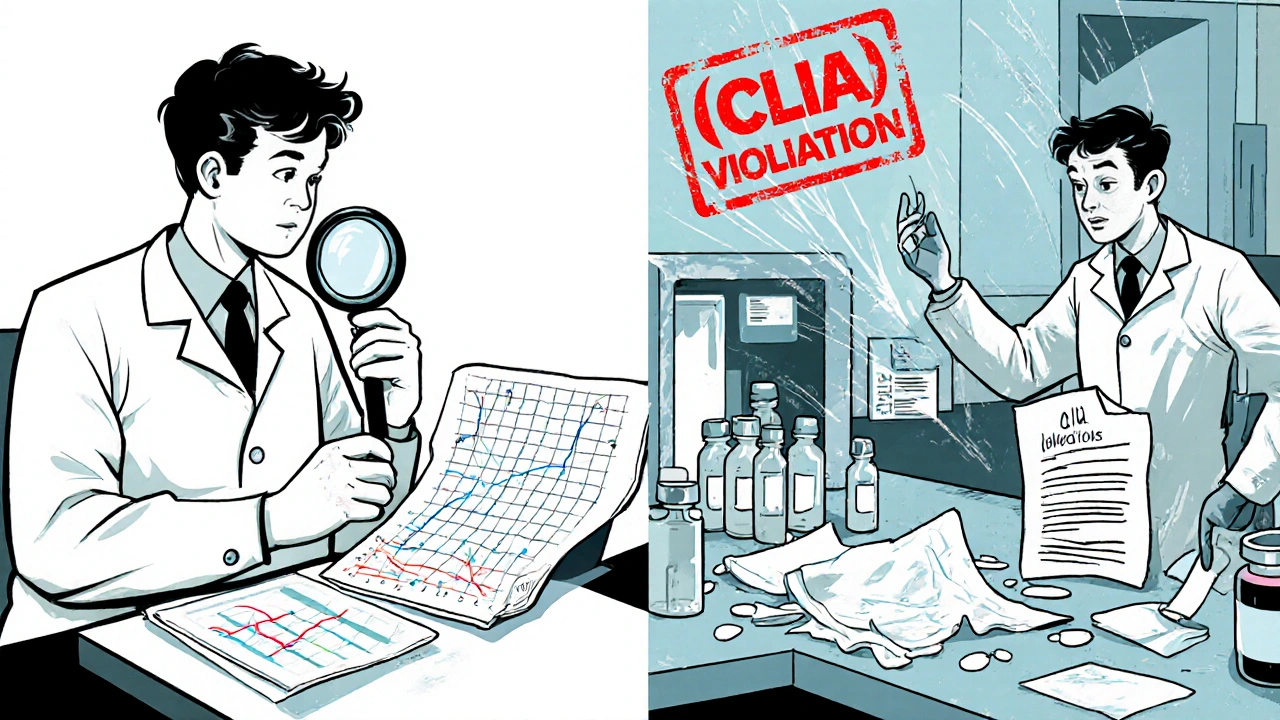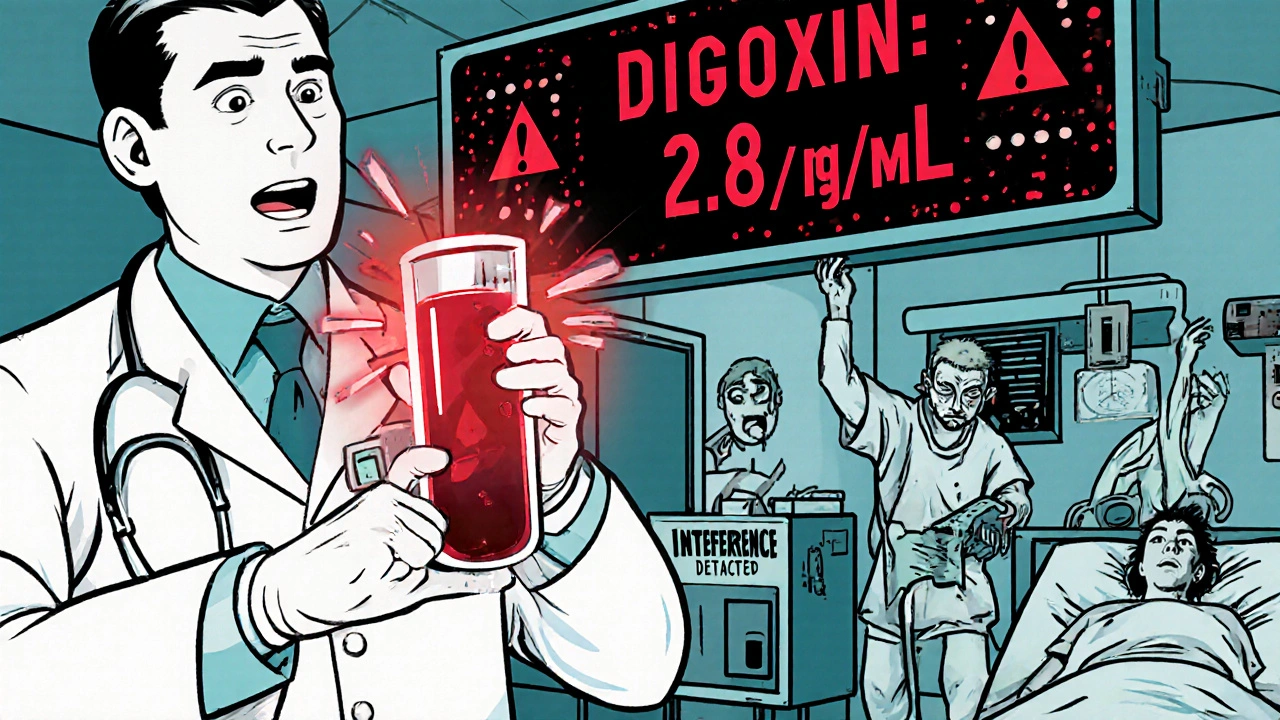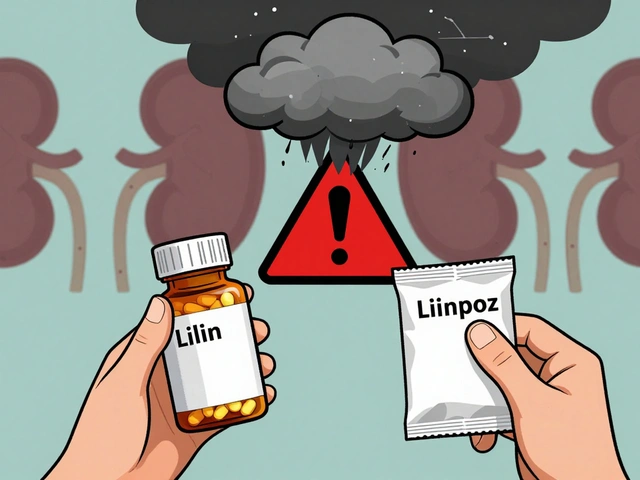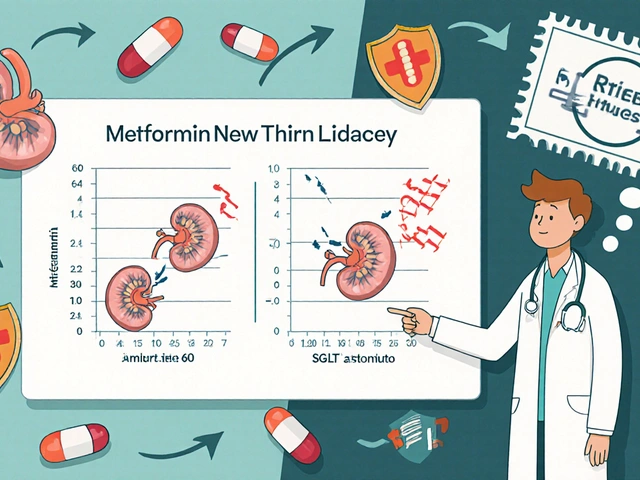When a patient is on a medication with a narrow therapeutic index-like digoxin, vancomycin, or lithium-getting the dose right isn’t just important. It’s life-or-death. Too little, and the drug doesn’t work. Too much, and it can cause toxicity, organ damage, or even death. That’s why therapeutic drug monitoring (TDM) exists: to make sure the amount of drug in the blood is exactly where it needs to be. But here’s the catch: if the lab test itself is flawed, no matter how carefully the doctor prescribes, the patient is at risk.
Why Lab Verification Isn’t Optional
Every time a hospital or lab starts using a new test to measure a medication in the blood, they don’t just flip a switch and start reporting numbers. They have to prove the test works. This isn’t bureaucracy-it’s patient safety. The process is called verification for FDA-cleared tests and validation for lab-developed tests. The difference matters. FDA-cleared tests, like those for lithium or tacrolimus, come with manufacturer data showing how accurate they are under controlled conditions. Verification means the lab checks that those claims hold up in their environment-with their instruments, reagents, and staff. Validation is heavier. It’s required when no FDA-approved test exists, like for some metabolites of clozapine. Here, the lab has to build the test from scratch and prove it works across every possible variable. The stakes? High. According to the Institute of Medicine, medication errors cause 7,000 to 9,000 deaths in the U.S. every year. A faulty TDM result can be one of them. A 2021 FDA report documented a case where a digoxin test failed to detect antibody interference, leading to 23 patients getting dangerously wrong doses. That’s not hypothetical. That’s happened.The 9-Step Verification Process (Simplified)
Most labs follow the APHL toolkit, the industry standard. Here’s what it looks like in practice:- Plan it out - Write down exactly what you’re testing, which drug, which instrument, what acceptance criteria you’ll use. This step alone takes 8-16 hours.
- Get approval - The lab director must sign off. No exceptions. This isn’t a formality-it’s a legal responsibility under CLIA regulations.
- Run the tests - For verification, that’s 20+ replicates over 5 days to check precision. You’ll test for bias using reference materials. You’ll spike samples with common interfering substances like bilirubin or hemoglobin to see if they throw off results.
- Analyze the data - Did your test meet CLSI EP15-A3 standards? Precision must be under 1/4 of the total allowable error. For vancomycin, that’s ≤3.75% error. For digoxin? ≤2.5%. If you’re over, you stop. You don’t report.
- Re-evaluate if needed - About 30% of verifications need a second round. Maybe the linearity curve dropped at the high end. Maybe one reagent lot behaved differently.
- Write the summary - A 10-page report detailing everything: methods, results, deviations, conclusions. This becomes part of the permanent record.
- Create documentation - SOPs, training manuals, competency checklists. Staff must know how to run it, interpret it, and troubleshoot it.
- Final approval - The lab director signs off again. Now it’s official.
- Implement - You’re live. But you’re not done. Ongoing quality control is required daily.
What Happens If You Skip Steps?
Some labs cut corners because they’re short-staffed. Others assume the manufacturer’s data is enough. Both are dangerous. A 2023 CAP survey found only 64% of labs verify the lower limit of quantitation for narrow therapeutic index drugs. That means 1 in 3 labs could be missing low drug levels-patients on the edge of underdosing, and no one knows it. For drugs like tacrolimus, where even a 1 ng/mL drop can trigger rejection in transplant patients, that’s catastrophic. Interference is the silent killer. Carbamazepine, for example, has metabolites that mimic the parent drug in some assays. If the lab doesn’t test for them, they’ll report a level that looks normal-but the patient is actually toxic. Dr. James Nichols of Vanderbilt calls this the most common error in TDM implementation. And the penalties? CMS fines labs $7,500 per violation. But money isn’t the real cost. It’s the trust patients and providers lose when a test fails.
What Providers Need to Know
You don’t run the lab. But you rely on it. So here’s what you should ask:- Is this test FDA-cleared or lab-developed? If it’s lab-developed, how recently was it validated?
- What’s the therapeutic range they’re using? Some labs still use outdated ranges for drugs like phenytoin.
- Do they report measurement uncertainty? A result of 12.5 mcg/mL means nothing if the uncertainty is ±3 mcg/mL. That’s a 24% range. Is that acceptable for your patient?
- How do they handle interference? Do they flag samples with potential cross-reactivity?
Tools and Trends Making It Easier
Thankfully, things are improving. The APHL toolkit has cut verification time by 30% for many labs. Roche, Abbott, and Siemens now provide pre-built verification templates for their TDM assays. Some labs use automated software to analyze linearity and precision data-cutting hours of manual math down to minutes. EHR systems are catching up too. Epic and Cerner now have built-in TDM modules that flag results outside therapeutic ranges, alert providers when levels are trending, and even suggest dose adjustments based on pharmacokinetic models. By 2025, 45% of U.S. hospitals have these integrated systems. And the FDA is tightening rules. Their 2024 draft guidance now requires testing for 15 metabolites for immunosuppressants-not just 8. That’s a big step toward safety.
When to Push Back
If a lab reports a vancomycin level of 78 mcg/mL and your patient is stable, ask: is that even possible? The upper limit of quantitation for most assays is 80 mcg/mL. If the test can’t accurately measure above 75, that result is unreliable. The lab should report it as “>75” - not as a precise number. Same with digoxin. If the result is 0.3 ng/mL and the patient has symptoms of toxicity, question it. The lower limit of quantitation for many assays is 0.5 ng/mL. That result might be noise, not data. Trust but verify. Your patient’s life depends on it.What’s Next?
The future of TDM is personalized. As more drugs become biologics-monoclonal antibodies, kinase inhibitors-the need for precise monitoring grows. Labs are moving toward algorithms that adjust doses based on genetics, kidney function, and drug interactions in real time. But none of that matters if the foundation is shaky. Verification and validation aren’t paperwork. They’re the bedrock of safe prescribing. Every time you order a TDM test, you’re asking the lab to tell you something critical about your patient’s body. Make sure they’re telling the truth.What’s the difference between verification and validation for medication monitoring tests?
Verification is used for FDA-cleared or approved tests. It confirms the lab’s setup matches the manufacturer’s claims-checking precision, accuracy, and interference under real-world conditions. Validation is for lab-developed tests (LDTs), where no FDA-approved version exists. It requires a full performance assessment: establishing the test from scratch, proving it works across all expected conditions, and documenting every step. Validation takes longer, costs more, and has a higher failure rate.
Which medications require the strictest monitoring and verification?
Drugs with a narrow therapeutic index need the tightest controls. These include digoxin (target range: 0.5-2.0 ng/mL), vancomycin (15-20 mcg/mL), lithium (0.6-1.0 mEq/L), and immunosuppressants like tacrolimus and cyclosporine. Even small errors in measurement can lead to toxicity or treatment failure. For digoxin, total allowable error must be ≤10%. For vancomycin, it’s ≤15%. Labs must meet these standards or risk patient harm.
How often should labs re-verify their medication monitoring tests?
Verification isn’t a one-time event. Labs must re-verify after any major change: new instrument, new reagent lot, major maintenance, or staff turnover. Most labs re-verify annually as part of routine quality assurance. If a test shows consistent drift in results or if interference issues arise, re-verification is required immediately. CLIA and CAP require ongoing performance monitoring-no exceptions.
Can a lab report a result outside its verified measuring range?
No. If a test’s verified range is 5-80 mcg/mL for vancomycin, and a sample reads 85 mcg/mL, the lab must report it as “>80” - not as 85. Reporting an unverified number gives a false sense of precision. This is a common violation. Labs that do this risk CLIA penalties and, more importantly, endanger patients by misguiding dose adjustments.
What should I do if I suspect a lab result is wrong?
Don’t act on it. Contact the lab. Ask if the test was FDA-cleared or lab-developed, when it was last verified, and whether interference was checked. Request the verification summary. If the result contradicts the patient’s clinical picture-like a high vancomycin level with no signs of toxicity-ask for a repeat test using a different method. If the lab refuses to explain or provide documentation, escalate to your institution’s medical director. Patient safety comes before protocol.





Jenny Lee
Just read this and immediately checked our lab's TDM protocol. Glad to see we're compliant.
Evan Brady
Man, I've seen labs skip verification because they're 'too busy.' Then a patient gets toxicity from a falsely low lithium level. It's not negligence-it's malpractice dressed up as efficiency. This guide should be mandatory reading for every lab tech and prescriber. The difference between verification and validation isn't semantics-it's whether someone lives or dies.
mithun mohanta
Let me just say-this is *exactly* the kind of over-engineered, bureaucratic nonsense that makes U.S. healthcare so expensive. In India, we just trust the doctor and the lab. Why do we need 9 steps? Who has time for this? The drug works or it doesn't. End of story.
Alex Boozan
Verification? Validation? Please. The real issue is that labs are outsourcing these tests to third-party vendors who don't even have CLIA certification. I've seen the reports. The data gets sanitized before it reaches the EHR. The FDA doesn't care. They're in bed with Roche and Abbott. You think this is about safety? It's about profit margins and market share.
Ram tech
why do we even need all this? i mean, if the patient feels bad, just give them less drug. problem solved. no need for all these fancy graphs and 10-page reports. too much paperwork, not enough real medicine.
Joshua Casella
When I was training residents last year, I made them pull the verification summary for every TDM test before they could order it. Most couldn't find it. One resident said, 'Isn't that the lab's job?' I told him, 'No. It's yours. You're the one signing the chart.' If you don't know how the number was generated, you're not prescribing-you're gambling.
Richard Couron
They're lying to us. Every single one of them. The 'verification' they show you? It's a PowerPoint made in 2019. The real test? They use a different reagent lot on weekends. And don't get me started on how they 'adjust' results when they don't match the clinical picture. I've seen it. They call it 'clinical correlation.' I call it fraud. And no one's getting fined because the regulators are asleep at the wheel.
Saket Sharma
Let’s be honest-this is all performative compliance. Labs verify because they’re scared of CAP inspectors, not because they care about patients. The moment the inspector leaves, they revert to cutting corners. The real problem? No one’s auditing the auditors. This whole system is a house of cards built on trust that no longer exists.
Alexis Paredes Gallego
Wait-so you're telling me that if a lab reports a vancomycin level of 78, and it's above their verified upper limit, they're supposed to say '>80'? That’s ridiculous. That’s not science-that’s censorship. Who decides what’s 'verifiable'? The FDA? Big Pharma? This is how they control the narrative. They don’t want you knowing how unreliable these tests really are. The truth is, no one knows what the real level is. And they’re okay with that.
Kevin Jones
Verification isn’t paperwork. It’s epistemology. It’s the question: How do we know what we think we know? When we accept a number without interrogating its origin, we surrender reason to ritual. TDM is not a number on a screen. It’s a window into the patient’s biochemistry-and if that window is dirty, we’re not seeing the patient. We’re seeing a ghost.
Shravan Jain
the whole thing is a scam. labs dont even do the verification. they just copy paste the manufacturer's data and call it a day. and doctors? they dont even look at the numbers. they just see 'therapeutic' and move on. its all theater. and the patients? they're the ones paying with their lives.
Erica Lundy
There is a profound ethical burden in the act of measurement. To report a number is to assume authority over the body’s invisible equilibrium. When verification is neglected, we do not merely risk error-we violate the covenant between clinician and patient: that what is measured shall be true. The laboratory is not a machine. It is a moral agent. And when it fails, the failure is not technical-it is existential.
Conor McNamara
did you know the fda only audits 1 in 200 labs? and most of those are just paperwork checks. the real risk? a reagent lot from china that wasn't tested for cross-reactivity. nobody checks that. and if your patient dies? the lab says 'we followed protocol.' protocol doesn't save lives. people do. and we're running out of them.
Brandon Lowi
They say verification takes 8-16 hours. That’s a luxury. In rural hospitals, one tech does everything. They don’t have time to spike samples with hemoglobin. They just run the test and hope. And when the patient codes? They say, 'It was an unpredictable reaction.' But it wasn’t. It was predictable. We just chose not to see it.
Premanka Goswami
Think about it-what if the entire TDM system is a distraction? What if the real problem is that we’re poisoning people with drugs we don’t understand? We measure lithium, but we don’t measure the soul. We measure vancomycin, but we ignore the trauma that led to the infection in the first place. Maybe the answer isn’t better labs… but better medicine. Maybe we’re treating symptoms and calling it healing.